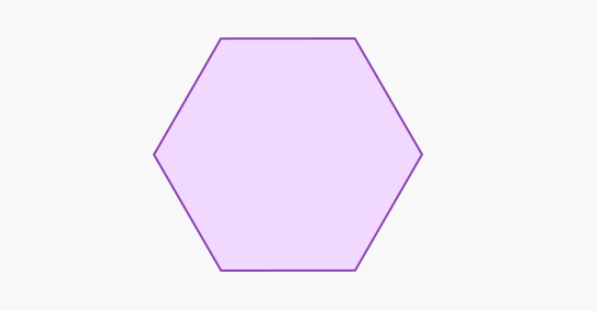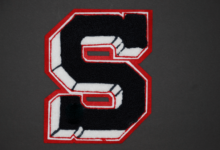Hexagon

Before learning about Hexagon let us understand a little about polygon. In the word polygon, the word “poly” means “many” and “gon” means “sides”. A polygon is a two-dimensional shape with a minimum of three sides. Triangle (three-sided), quadrilateral(four-sided), pentagon(five-sided) etc. A Hexagon is a polygon with six sides and six vertices. It encloses six equilateral triangles. Honeycomb, nuts, tie knot, pencil base, etc are a few of the many examples of Hexagon.
In geometry, a Hexagon is a two-dimensional polygon with six equal sides and six vertices. When six equilateral triangles are placed side by side, a regular hexagon is formed. The regular hexagon’s area is then equivalent to six times the size of the same triangle. The sum of a regular hexagon’s internal angles is always 720°, which may be found by counting the number of triangles that fit inside the hexagon.
Types of Hexagons
- Regular Hexagon
Hexagons with six equal-length sides and six congruent interior angles are called regular hexagons. Regular hexagons, also known as equilateral hexagons, are always convex in shape. Regular hexagons have six lines of symmetry. In addition, all regular hexagons have 120-degree internal angles.
- Irregular Hexagon
Irregular hexagons have unequal side lengths and interior angles. An irregular hexagon is a six-sided flat shape that encloses a space. Concave or convex hexagons can be found with irregular hexagon
- Convex Hexagon
A convex hexagon is a hexagon with an internal angle of less than 180 degrees. Convex hexagons are always regular hexagons. Convex hexagons can also be irregular hexagons.
- Concave Hexagon
At least one interior angle of a concave hexagon is greater than 180 degrees. An irregular hexagon will always be a concave hexagon.
Properties of a Hexagon
- It is a two-dimensional shape
- It encloses a space
- It has six sides that are of the same length and six vertices
- The Sum of all the six interior angles equals 720 degrees(120 degrees each)
- The Sum of all the exterior angles is 360 degrees( 60 degrees each)
- It has nine diagonals.
- A regular hexagon is made up of six equilateral triangles.
- Regular hexagons have parallel opposite sides.
Examples
In both the natural and human world, hexagons are six-sided plane forms with a variety of unique traits and properties. Every soccer ball and the cross-section of most wooden pencils have regular hexagons.
Hexagonal nuts and bolts are also common. The hexagonal pattern of a floor or bathroom wall is also frequent in residential and business interiors. The hexagon form is a popular go-to polygon due to the natural world and physical forces. Hexagonal forms can be seen in soap bubbles, beehives and honeycomb, and crystals.
- Honeycomb
A Honeycomb is a common and naturally occurring hexagonal shape. Each cell of a honeycomb has six sides, six vertices, and six angles, making it a perfect hexagon.
- The base of a pencil
A pencil’s base is another example of hexagon-shaped things in everyday life; however, a pencil can be created in a variety of shapes, including triangular, rectangular, and other geometric shapes.
- Stop & Go Signs
Stop signs are normally built in the shape of a conventional hexagon or octagon and placed along the roadside. These signs have a geometric shape that makes them stand out from the others. The familiar design of the stop signs alerts drivers viewing the back of the sign. This increases the quality and safety of driving.
Dodecahedron
The Dodecahedron has 12 regular pentagonal faces. They have 20 vertices and 30 edges. Their faces meet at each vertex. The dodecahedron has 120 symmetries. An equilateral triangle, a square, a regular pentagon, a regular hexagon (two ways), or a regular decagon are all possible cross-sections of the dodecahedron. A regular decagon can be the planar projection of a dodecahedron. The regular dodecahedron has the unique virtue of being able to start at any corner of the surface and draw an unlimited number of straight lines across the figure without crossing any other corners.
Want to learn more about hexagons, visit the Cuemath website to learn more about math.








